Ever wondered how an eagle can swoop down from the sky and snatch a fish right out of the water with flawless precision? It’s not just skill — it’s next-level eyesight. Eagles are like flying cameras, equipped with ultra-high-definition vision that puts modern drone tech to shame.
These majestic birds don’t just glide through the air — they hunt with purpose. Their eyes are designed for the skies, and when you learn just how powerful their vision really is, it’s hard not to be amazed.
Eagle Vision: Better Than 20/20
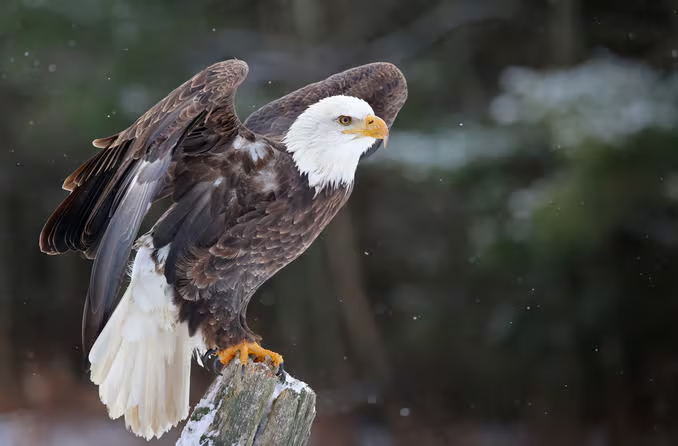
Most humans consider 20/20 vision to be perfect. But eagles? They blow that out of the water.
Eagles are believed to have 20/5 vision, meaning they can see from 20 feet away what a human would only see clearly at 5 feet. That’s four times sharper than our best natural vision. This insane clarity allows them to pick up details we’d miss entirely — like a small fish flicking near the surface of a river, all from hundreds of feet in the air.
Imagine being able to spot a coin on the ground while standing on top of a 10-story building — that’s the eagle’s world.
Glare? Not a Problem for Eagles
Now, let’s talk about water. Even on a sunny day, the surface of a lake or river can be like a mirror — filled with glare and reflection. For us, it’s tough to see past it. But for eagles?
Their eyes are naturally equipped to filter out glare. They have a special structure in their retina that reduces the interference caused by reflected light, allowing them to cut through brightness and focus on movement beneath the surface. It’s like wearing polarized sunglasses — except built-in, and way more advanced.
Video : The Incredible Eyesight of Eagles: Nature’s Sharpest Vision
So while we might squint at a shiny lake, an eagle is already locked on to lunch.
Binocular Vision That Tracks Targets Mid-Air
You’ve probably heard the term “binocular vision” before — it’s what allows animals (and humans) to judge distance. Eagles have this too, but with a supercharged twist.
Their eyes face slightly forward, giving them excellent depth perception. And because they can move their heads smoothly while keeping their eyes locked on a target, they maintain laser focus even during high-speed dives. That means they can:
- Track a moving fish
- Calculate the angle of attack
- Time their dive to the millisecond
No second guesses. No hesitation. Just pure precision.
A Wide-Angle Field of View Without Losing Detail
Another wild fact? Eagles have a field of view of about 340 degrees — nearly a full circle. Yet somehow, they manage to maintain pinpoint detail in their central vision.
Their retinas are loaded with cone cells, which detect fine details and colors. This gives them a massive advantage: they can scan a huge area while simultaneously zooming in on one moving object. It’s like having both a panoramic lens and a telephoto lens active at the same time.
While you’re blinking at a blurry bird in the sky, the eagle already sees you — and probably knows what brand of hat you’re wearing.
How Eagles Use Vision to Hunt
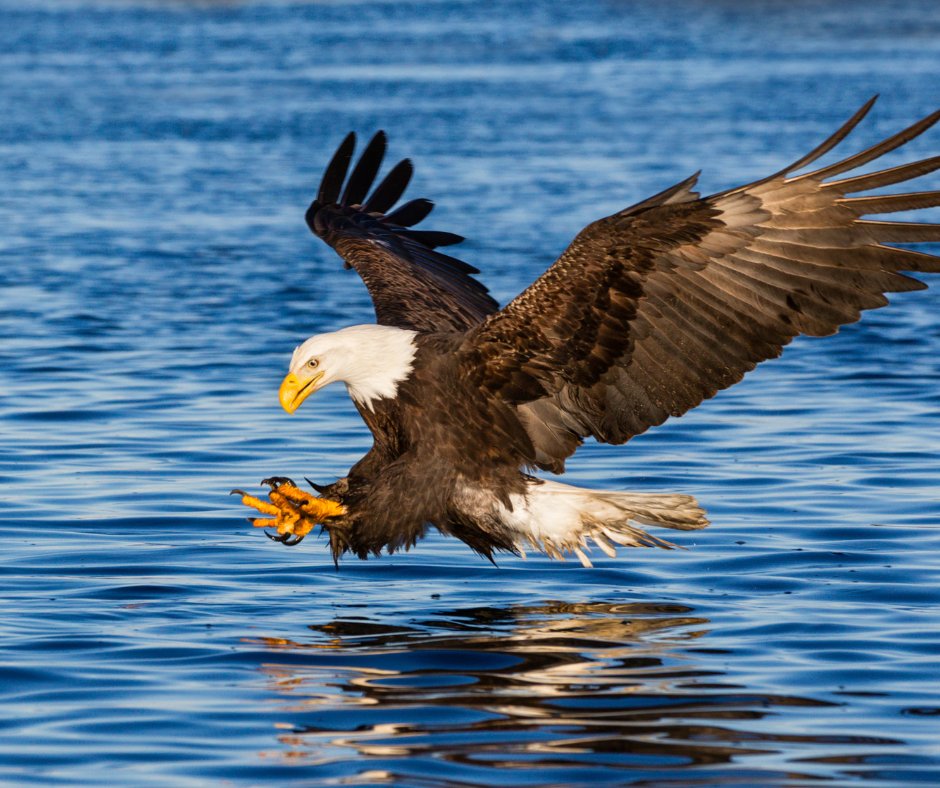
Let’s break it down. Picture an eagle flying 300 feet above a river. It’s calm, quiet, and the water’s shimmering. Then, with almost no warning, the eagle changes course. Its wings pull in tight, and it drops like a missile.
Why? Because its eyes just caught a tiny flash beneath the surface — a fish swimming near the top.
The eagle:
- Adjusts its position mid-flight
- Times its dive perfectly
- Uses its talons to grab the fish — often without getting fully wet
This all happens in seconds. And it all begins with a flash of movement that you and I wouldn’t even notice.
Evolution Built the Ultimate Predator’s Eye
Eagles didn’t just wake up one day with superhero vision. This visual power is the result of millions of years of evolution, fine-tuned for survival.
Their eyesight helps them:
- Hunt more efficiently
- Avoid threats
- Navigate wide territories with ease
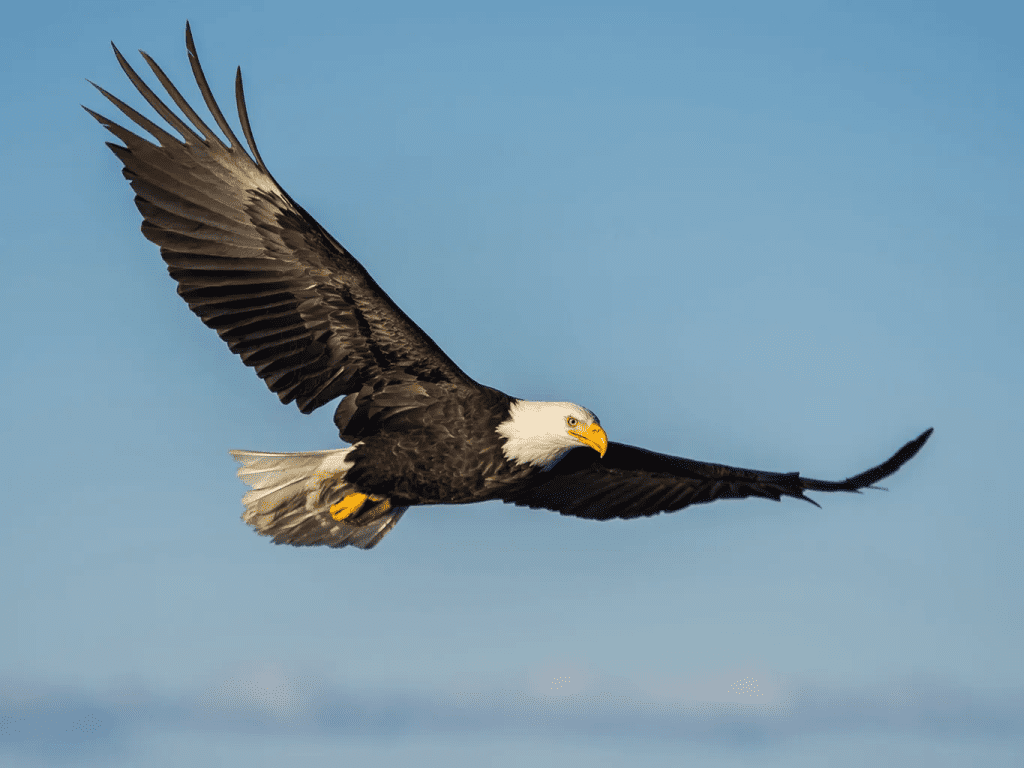
In the wild, vision is survival, and eagles have mastered that art. From open skies to dense forests, they rely on their vision more than anything else. It’s their secret weapon — and honestly, their superpower.
How Eagles Compare to Human Technology
Think your 4K drone is impressive? Eagles would laugh — if they could.
While drones rely on lenses and software to zoom and focus, eagles do it naturally and in real-time. No battery required. No GPS lag. Just pure instinct and biological design.
Their eyes offer:
- Superior motion detection
- Real-time tracking
- Optical clarity beyond anything man-made
In fact, researchers studying eagle vision have helped inspire improvements in camera lenses, tracking systems, and even augmented reality.
Why It All Matters: Nature’s Design Is Still Unmatched
Eagles remind us of something powerful — nature still does it better. We’ve created incredible tools and gadgets, but the eagle’s eye shows that evolution’s been doing high-tech for much longer.
Video : Just How Good is Eagle Vision?
Next time you see one soaring in the sky, take a moment. You’re looking at a living, breathing marvel — one that can see better, move faster, and hunt smarter than any drone or AI-powered camera.
Conclusion: Eyes on the Skies
Eagles aren’t just symbols of power — they’re visual masters of the natural world. With vision four times sharper than ours, built-in glare filters, and targeting precision that feels almost mechanical, they dominate the skies like no other.
Their eyes are their greatest weapon — and their greatest gift.
So, the next time you see an eagle circling high above, remember: it sees you… in more detail than you’ll ever see it. And that’s not magic — that’s evolution in high definition.
Think your eyes are sharp? Nature’s got you beat — try spotting a fish from 300 feet up.
The Heartwrenching Life of Mary Tyler Moore
Mary Tyler Moore spent decades as “America’s Sweetheart,” starring in popular shows like The Dick Van Dyke Show and The Mary Tyler Moore Show. But behind her Hollywood success, her life was filled with family tragedies. Here is the story of Mary Tyler Moore.
Mary Tyler Moore was born on December 29, 1936, in Brooklyn, New York, to George Tyler Moore, a clerk, and Marjorie Hackett Moore. She was the oldest of three children in a Catholic family, raised in a home her father called “impoverished nobility.”
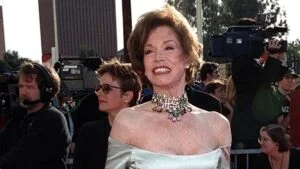
Mary Tyler Moore – Childhood
Brooklyn was a diverse place during Mary’s childhood. As an English-Irish Catholic, she grew up in an orthodox Jewish neighborhood. Though it was different from what she was used to, Mary found it exciting. “My background is exciting,” she said. “We integrated ourselves, fought each other, called each other names, but through it all we were friends.”

Mary loved dancing as a young girl. When she was five, her family moved to Los Angeles, bringing her closer to her dream of being in show business. After World War II, the Moore family settled in Los Angeles, where Mary’s successful uncle, Harold Hackett, encouraged the move.

Moving to Los Angeles
Starting at the bottom, Mary worked hard to achieve her dream. She attended grammar school in Hollywood and later went to a Catholic school. She wasn’t the best student and struggled with self-confidence, especially with a father who was an expert on movie classics.

However, Mary knew that if she was going to make it in show business, LA was the place to be. She focused on singing and dancing and worked in the mailroom of a Hollywood company in 1953. Although it wasn’t glamorous, it was a step toward her dream. But Mary wasn’t meant to stay in a mailroom.

Mary would often sit in on radio show rehearsals, and she eventually took dance classes, which her aunt paid for. By the time she graduated high school, Mary was well on her way to a career in show business.

Mary Tyler Moore – Dancer
In 1955, Mary got her first on-screen role as a dancer in TV commercials for The Adventures of Ozzie and Harriet. She played “Happy Hotpoint” in 39 segments, earning $6,000. At just 17 years old, Mary was now a professional dancer. But soon, she found out she was pregnant, which changed everything.

Mary had married Richard Carleton Meeker in 1955, and they had a son, Richard “Richie” Meeker Jr., in 1956. She wrote in her memoir how difficult it was to continue working as an actress while pregnant. She even had to squeeze into a costume that became tighter as her pregnancy progressed.

Mary Tyler Moore – Comedy Shows
After her pregnancy, Mary’s career took off. She appeared in several TV shows, and although she was often hired for her “beautiful dancer legs,” she soon proved she had real talent. In the early 1960s, she was cast as Laura Petrie on The Dick Van Dyke Show. The show became a huge success, known for its clever humor. Mary won two Emmys and a Golden Globe for her work on the show.

After the show ended in 1966, Mary took a break to focus on family and movies. However, she found her true calling in comedy shows. In 1970, she got her own show, The Mary Tyler Moore Show, where she played the role of Mary Richards, a single woman working as a producer at a fictional news station. The show was groundbreaking and became an instant hit.
Mary’s show ran for seven seasons and 168 episodes, earning her many awards. But it wasn’t all easy. Before the pilot aired, both Mary and the writers were worried. They had a terrible first run-through, and Mary cried herself to sleep. But the writers made changes, and the show became a huge success.

Mary Tyler Moore – Awards
The show was filmed in front of a live audience, which made it nerve-wracking for Mary, who often had to perform dance routines perfectly. “It was do or die,” she said. Mary won several awards for her role, including three Emmys and a Golden Globe, proving her talent.
However, behind the success, Mary faced personal struggles. Both she and her mother battled alcoholism. Mary’s sister passed away from a combination of alcohol and painkillers, and Mary’s own son also faced addiction and tragic loss.

Alcohol Abuse
Mary’s alcoholism worsened during her marriage to Grant Tinker. She would drink to cope with unhappiness, even playing “Russian roulette” with her car. After their divorce in 1980, Mary’s drinking continued until she checked into the Betty Ford Center for help. She managed to stop drinking and found strength during her recovery.
Tragic Passing of Son Ritchie Meeker
Mary’s son, Richie Meeker, tragically passed away in October 1980 after accidentally shooting himself with a gun. Richie had struggled with addiction, and his death was devastating for Mary. She later spread his ashes in the Owens River in California and wrote about her grief in her memoir.
Mary Tyler Moore – Academy Award
Despite the heartbreak, Mary continued to find success. In 1980, she starred in Ordinary People, earning an Oscar nomination for Best Actress. She also won a Tony Award for her Broadway performance in Whose Life Is It Anyway?.
Mary married Robert Levine in 1983, and they stayed together until her death in 2017. In her later years, Mary battled complications from diabetes, including heart and kidney problems. She also lost her vision, and in 2011, she had a benign tumor removed from her brain.
Mary Tyler Moore passed away on January 25, 2017, at the age of 80 due to cardiopulmonary arrest, following a battle with pneumonia. Her death was met with tributes from fellow celebrities, including Robert Redford and Oprah Winfrey.
Mary Tyler Moore had a tough life behind the scenes, but she will always be remembered for her talent, grace, and kindness. She will be missed, but her legacy lives on.


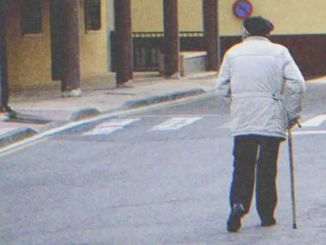
Leave a Reply